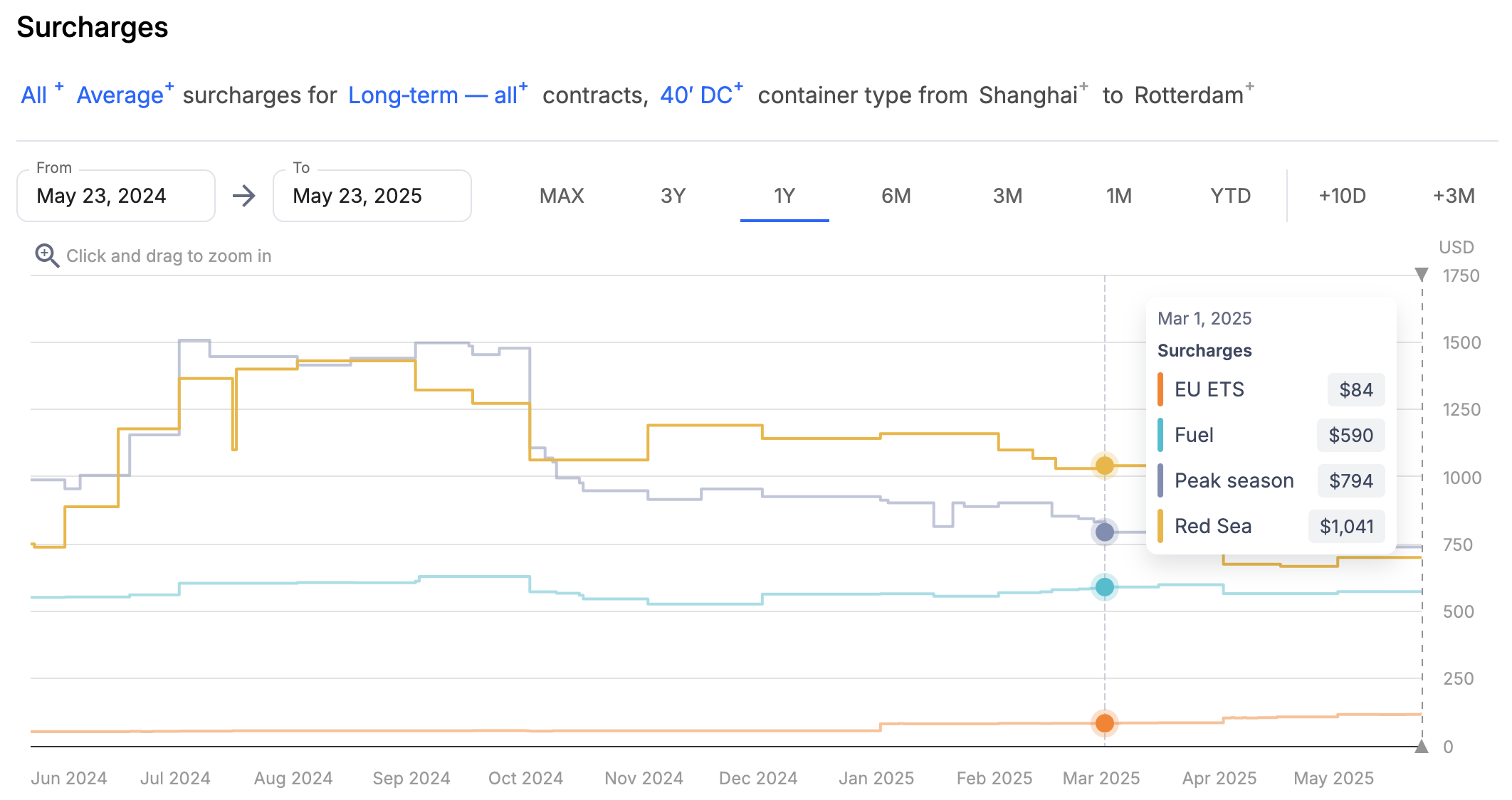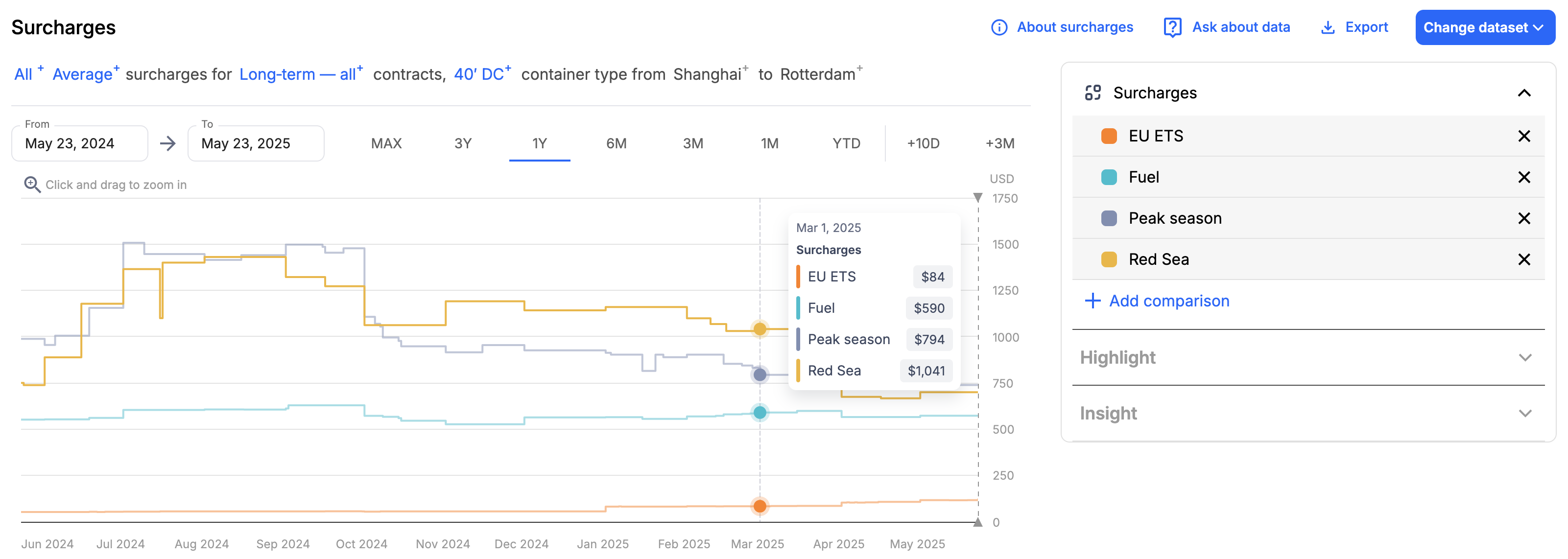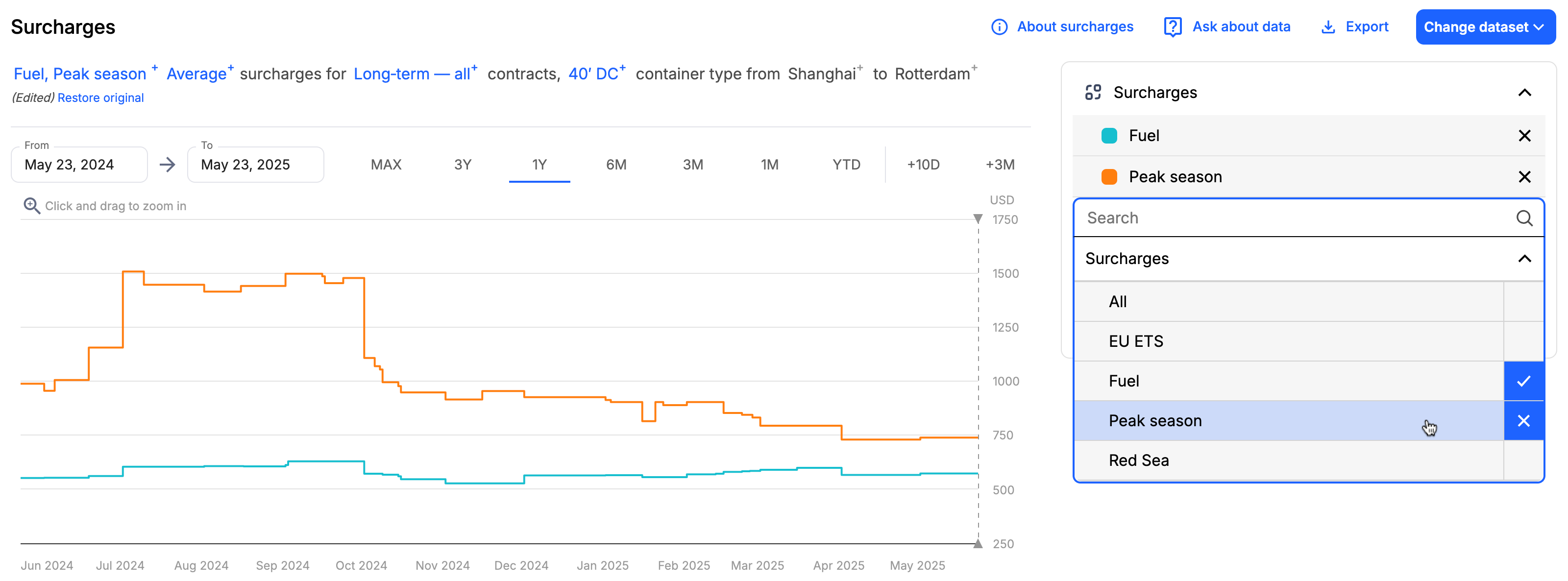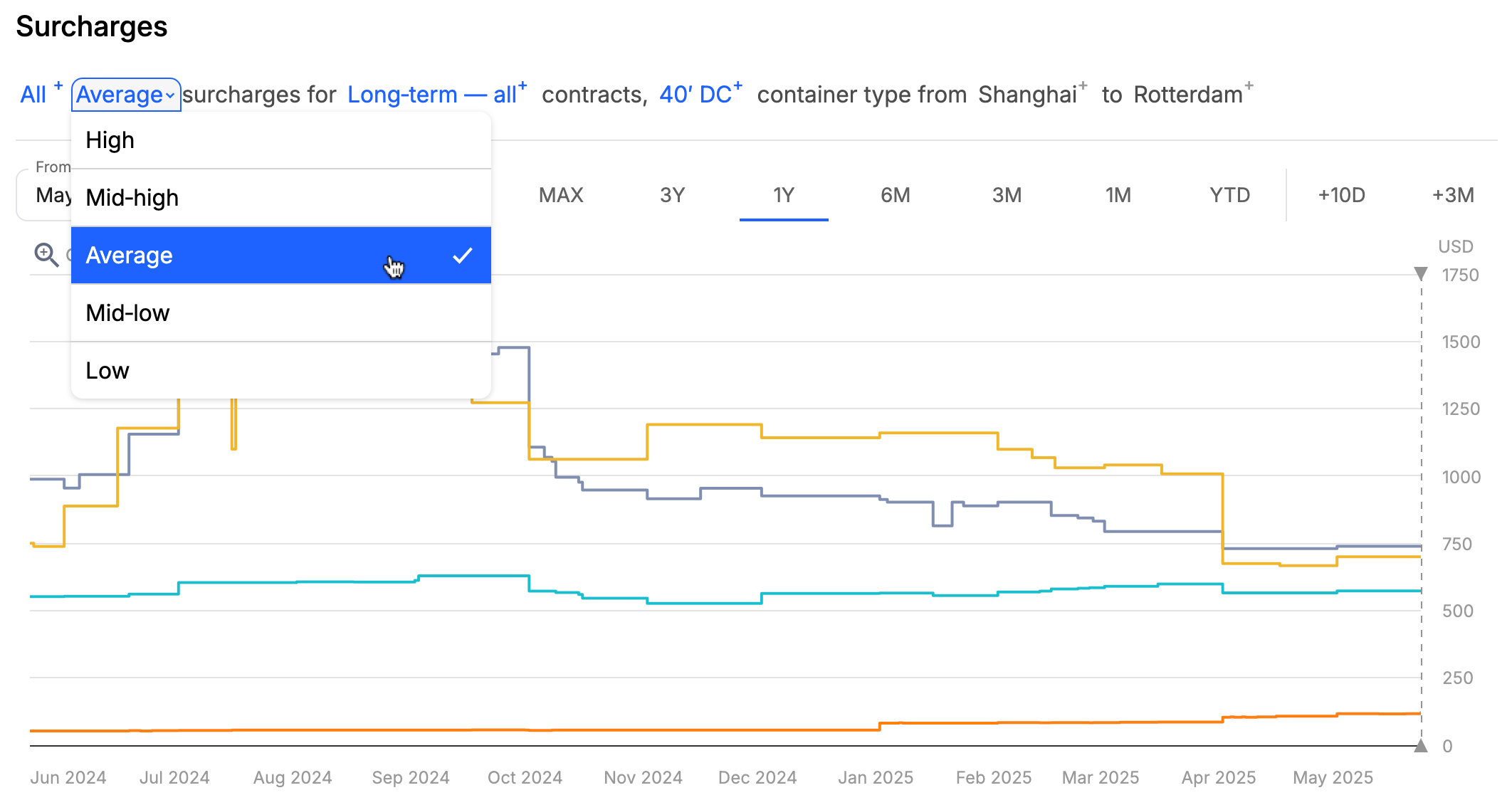Surcharges
Surcharges is a collection of market data available on the Market benchmarks page that provides a detailed insight into the historical development of certain surcharges that have a significant impact on freight rates on some of the largest global trade lanes.

Available surcharges
Xeneta provides detailed information on the following surcharges:
- Fuel (also known as Bunker Adjustment Factor or BAF)
- Peak season
- Congestion
- EU ETS (EU Emissions Trading System)
- Red Sea (short and long-term)
Note that these surcharges are not universal and whether or not they apply to a specific rate depends on many different factors.
There is no direct correlation between these surcharges and the market rates displayed in Xeneta, so it's incorrect to assume that the total rate is negative by simply subtracting the surcharges from the average all-in rate.
We are showing these particular surcharges because:
- They make up a significant portion of the final freight rate
- We have enough high-quality data to show detailed and accurate information on these surcharges
View surcharges data
To access the surcharges data, go to Market benchmarks and select Surcharges in the Change dataset menu — the graph for the selected origin and destination will be updated with a detailed breakdown of available surcharges:

The default view shows all available surcharges on the selected trade lane, but you can also select to view specific surcharges individually using the Add comparison menu to the right of the graph:

Surcharges methodology
We calculate the surcharges by taking all available surcharge data associated with the contracted rates in our aggregation for individual trade lanes and container types and then working out the their High, Mid-high, Average, Mid-low, and Low values that we then show in the platform.

The main advantage of this methodology is that there are no estimates — it's all based on real-life data taken from actual ongoing contracts that help paint a real-time market picture. The downside is that we might not have enough data to cover some origin-destination pairs.
Updated about 2 months ago